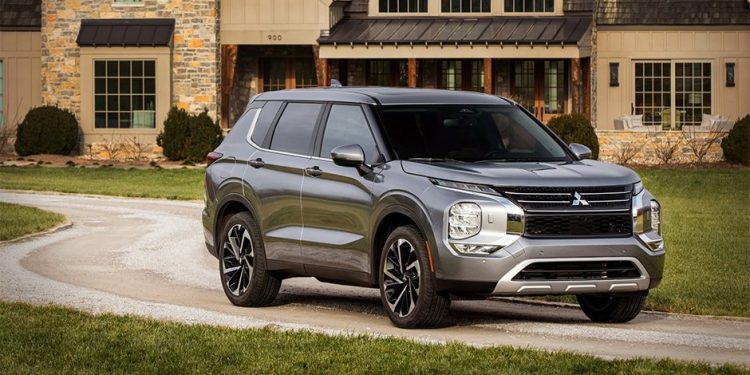All-new Mitsubishi Outlander debuts. Can it save the brand?
While all the focus has been on its alliance partner Nissan, Mitsubishi has also been battling over the last few years. Such is the desperation that the two firms discussed the possibility of merging in 2020, in the midst of big losses (sales being down 27 per cent year-on-year).
A shining beacon for the brand has broken cover in the form of an all-new Outlander. While it’s one of the oldest models in its current line-up, the existing Outlander remains one of the brand’s best sellers globally. So, the arrival of a new one (Mitsubishi’s first all-new model since the Eclipse) will be welcomed with open arms.

Underpinning the all-new Outlander is a new platform to the marque. It’s shared with Nissan’s similarly sized Rogue, and will likely represent a significant step forward dynamically. It’s also much roomier on paper. Mitusbishi boasts that the model is 50.8mm longer than the last one, allowing for almost 40mm more wheelbase. Front passengers get 25mm more leg-room, and second-row passengers 28mm.
As has always been the case, the Outlander packs three rows of seating. Third row occupants are still likely to feel somewhat cramped, but that’s not surprising given that the Outlander is one of the smallest, cheapest seven-seaters on the market.

Mitsubishi has paid particular attention to making the new Outlander look as up-to-date as possible. The exterior’s chunky styling is reminiscent of several past Mitsubishi concepts, and the futuristic looks continue inside, too.
Mitsubishi claims the new cabin offers a “quiet and serene space, showcasing quality and convenience through class-above materials.” Going on images at least, they seem to have a point. It’s a far cry from the last-generation looks of the current model; the new two-tone door cards and minimalist dashboard showing a world of improvement.
There’s two notable screens to mention; the 12.3-inch digital cluster behind the steering wheel and the primary 9-inch touchscreen in the centre. Other new modcons of note include a selection of USB-C ports (there’s a few USB-As, too), heads-up display, radar cruise control, and a Bose sound system.

Like the platform, the engine is also a new-to-Mitusbishi Nissan hand me down, in the form of Nissan’s 2.5-litre ‘PR25DD’ four-cylinder petrol. It produces a humble 135kW/245Nm, and comes paired to an 8-step CVT. A plug-in hybrid is set to be unveiled in due course, either later this year or in 2022.
Enthusiasts who aren’t too excited by those numbers can get excited by the inclusion of Mitsubishi’s ‘Super All-Wheel Control 4WD System’. Its naming conventions leave something to be desired, but nevertheless it’s one of the more impressive 4WD systems on paper in class — not unlike the system that appears in the flagship Triton ute.
With the model going on sale in Australia in September or October this year, expect New Zealand to get it at around the same time. Local pricing and spec are still to be confirmed.





